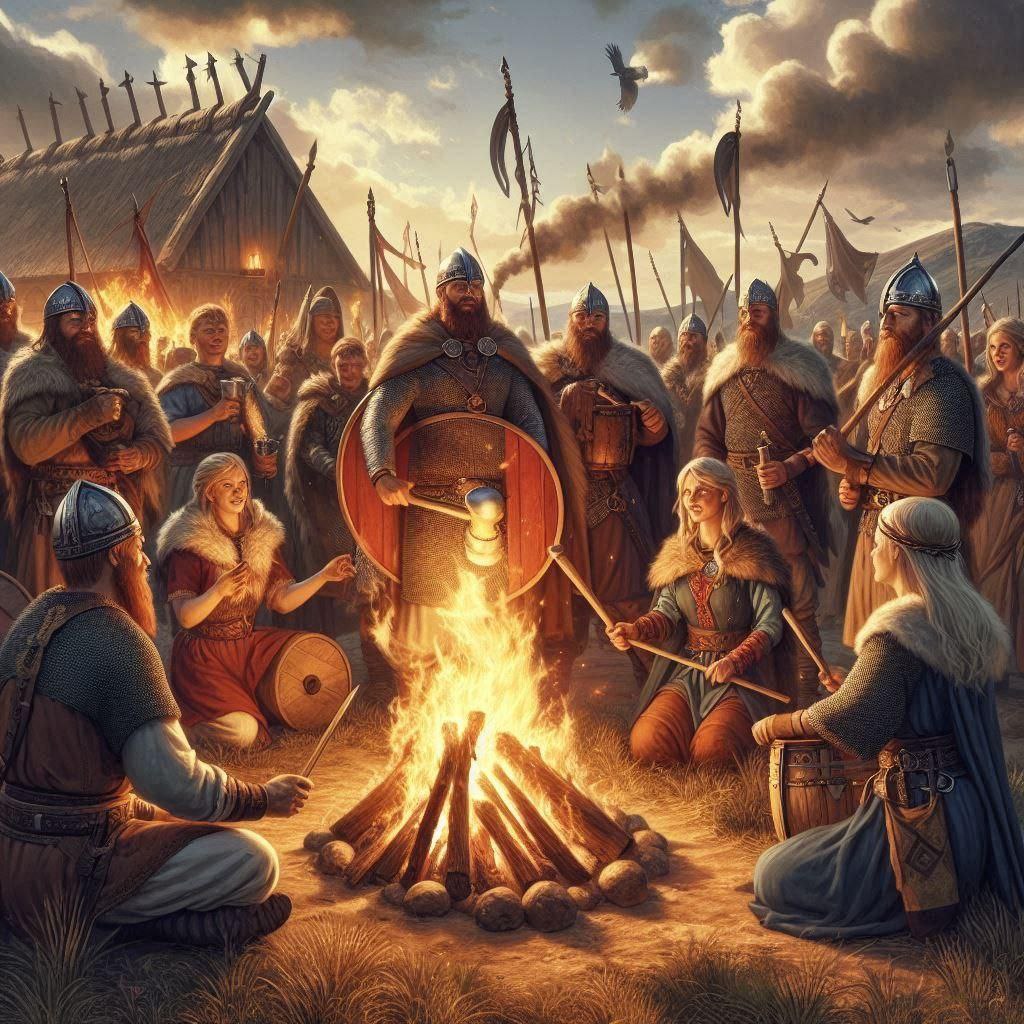6 Kings and Queens Midsummer Event
The VIKings and VIQueens is a personal mastery initiative that uses traditional nordic practices combined with modern ideology and a system of accountability to first help individuals to understand themselves and then embody that understanding in their very core.
This event, In The Beginning, is a celebration of the Midsummer Blot which was an important nordic festival in celebration of the beginning of summer around the solstice. In modern times, it also takes place around Father’s Day so we are putting an emphasis on celebrating with Dads and their families as well. All ages are welcome, but older children will be able to do more of the activities.
We’re in the thick of a civilizational stress test. It feels like a permanent five-alarm emergency, signaling that massive change is inevitable. But it’s more than just change – this scenario demands authentic transformation. We need to learn, strengthen ourselves, gather hope and inspiration, work better together, and fast-forward the transformation.
At this moment, our power lies in knowing who we are and what we stand for and our strength and in the strength of community. It’s about changing our societal pronoun from “me” to “we.” We know the solutions residing in nature surpass our conception of what’s even possible and we know that human creativity is rising to solve the fundamental crises we collectively face. There’s a window through, and we’ll open it together.

This event is going to be a Boulder community-oriented one. We’re doing this to build an inner community of VIKings and VIQueens within our greater community.
Part of the focus of this event, as an homage to Fathers day also, is to review and learn about traditional Nordic holiday celebrations, rights of passage, and holiday traditions.
Viking Rites of Passage are split up into the following three categories traditionally:
- Homesteading
- Weaponry
- Conquest
At least for the initial event, our activities will not include actual combat but instead different forms of offense and defense.
Offense:
- Axe Throwing
- Knife Throwing
Protection:
- Runecasting
- Runebinding/ Sigils
- Conquest: Rather than traditional conquest, which has no place in our society, we will instead be doing a different type of conquest… conquering fears.
It is free and anyone can come to part or all. Food/ drinks for purchase and there will be traditional meals and drinks served. Feel free to bring potluck items for sharing as well.
The Norse people celebrated the summer solstice, known as Midsummer or “Midsommar,” with various rituals and festivities that were deeply connected to their pagan beliefs and agricultural practices. The summer solstice marked the height of the sun’s power and was a time of great joy and reverence. Here are some key elements of their celebrations:
- Bonfires: Lighting bonfires was a central aspect of the Midsummer celebration. These fires were believed to protect against evil spirits and were often accompanied by feasting and merrymaking. People would dance around and sometimes even jump over the fires as part of the festivities.
- Feasting and Drinking: As with many Norse celebrations, food and drink played a significant role. People would gather to enjoy lavish feasts, which included meats, breads, fruits, and plenty of ale or mead. This communal eating and drinking fostered a sense of community and celebration.
- Honoring Deities: The Norse people used the solstice to honor their gods, particularly those associated with fertility, sun, and the harvest. Freyr, the god of fertility and prosperity, and Sunna, the sun goddess, were particularly significant during this time. Offerings and sacrifices, such as food, drink, and sometimes animals, were made to ensure a bountiful harvest and protection.
- Rituals and Divination: Various rituals were performed to ensure the health and fertility of the land and the people. This included rituals to protect crops and livestock. Divination practices were also common, as people sought to predict the future and gain insight into the coming months.
- Decorations and Symbols: Homes and communal areas were decorated with greenery and flowers, symbolizing growth and fertility. The use of specific plants, such as birch branches and herbs, was common, as they were believed to have protective and beneficial properties.
- Dancing and Music: Music, dancing, and games were important parts of the celebration. Traditional songs and dances helped to strengthen community bonds and celebrate the peak of the summer season.
- Nature Celebrations: Many Norse people would spend time in nature, celebrating the longest day of the year by acknowledging the sun and the natural world around them. This connection to nature was a fundamental aspect of their spirituality and way of life.
These customs and practices varied among different Norse communities and evolved over time, but the core elements of fire, feasting, honoring deities, and celebrating nature remained central to their Midsummer festivities.
If you would like to come to our event, please submit your email down below and we will send you a message with information regarding the details of attending.
